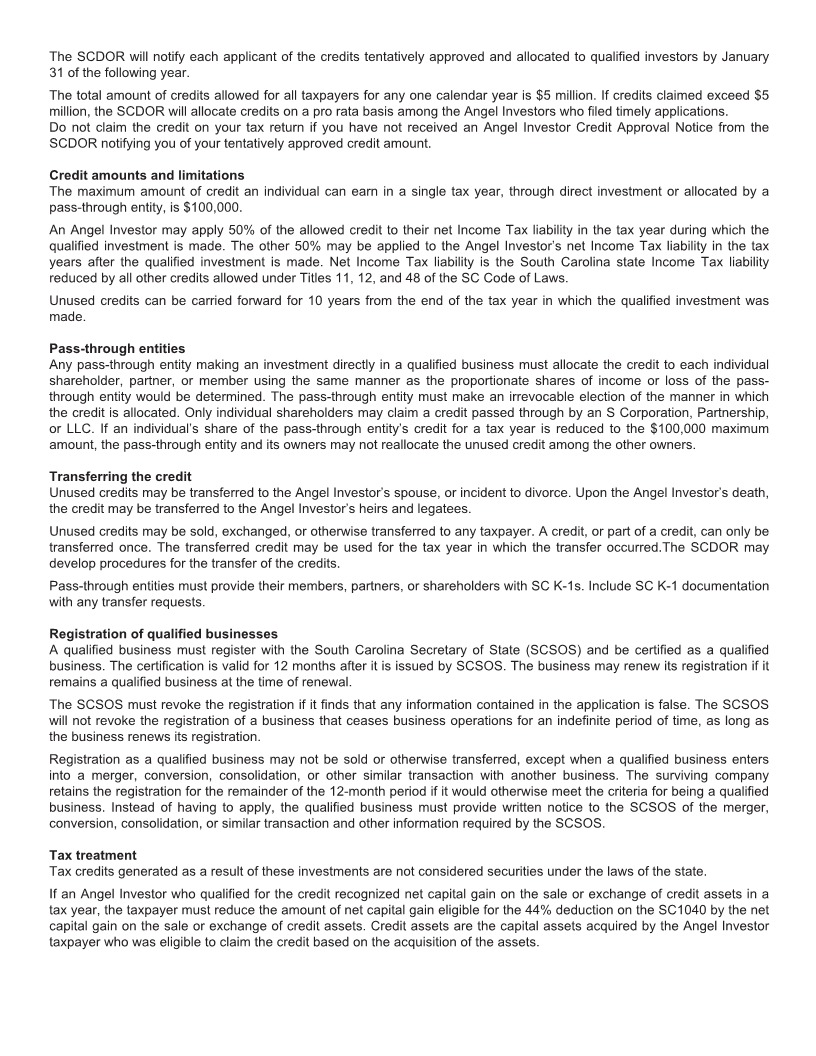
Enlarge image
1350 STATE OF SOUTH CAROLINA
DEPARTMENT OF REVENUE SC SCH.TC-56
(Rev. 5/14/24)
ANGEL INVESTOR CREDIT 3657
dor.sc.gov
20
Name SSN or FEIN
Do not file the TC-56 if you have not filed an Application for Angel Investor Credit and been tentatively approved
by the SCDOR.
Individual taxpayers ONLY - Complete line 1 through line 8
1. Total credit tentatively approved this tax year...................................................................... 1.
(If filing by paper, include SC K-1s identifying credits passed through by all S Corporations,
Partnerships and LLCs.
2. Maximum credit you can earn in a tax year ......................................................................... 2. $100,000
3. Credit earned this tax year (lesser of line 1 and line 2)......................................................... 3.
4. Available credit earned this tax year (multiply line 3 by 50%)................................................ 4.
5. Credit earned but not available this tax year (subtract line 4 from line 3) ............................... 5.
6. Unused credit from all prior years....................................................................................... 6.
7. Credit you transferred to another taxpayer .......................................................................... 7.
(Include unused credits that were transferred on your behalf by an S Corporation,
Partnership, or LLC. Unused credits can only be transferred once.)
8. Prior year credit available (subtract line 7 from line 6).......................................................... 8.
All taxpayers - Complete line 9 through line 17
9. Credit transferred to you from another taxpayer .................................................................. 9.
(Unused credits can only be transferred once.)
10. Add line 8 and line 9......................................................................................................... 10.
11. Expired credit.................................................................................................................... 11.
(Unused credits can be carried forward for 10 years from the end of the tax year the
qualified investment was made.)
12. Subtract line 11 from line 10 ............................................................................................. 12.
13. Credit available this tax year (add line 4 and line 12) ........................................................... 13.
14. Current year tax liability .....................................................................................................14.
15. Current year credit (lesser of line 13 and line 14)................................................................. 15.
16. Subtract line 15 from line 13 .............................................................................................. 16.
17. Credit carryforward (add line 5 and line 16)......................................................................... 17.
(Unused credits may be carried forward for 10 years from the end of the tax year the
qualified investment was made, and may be transferred only once.)
36571026



